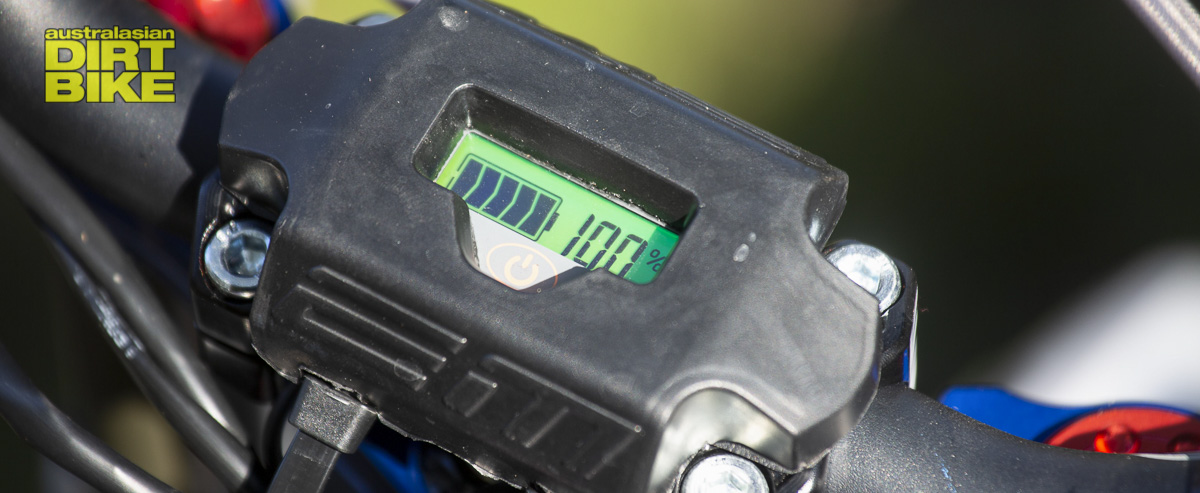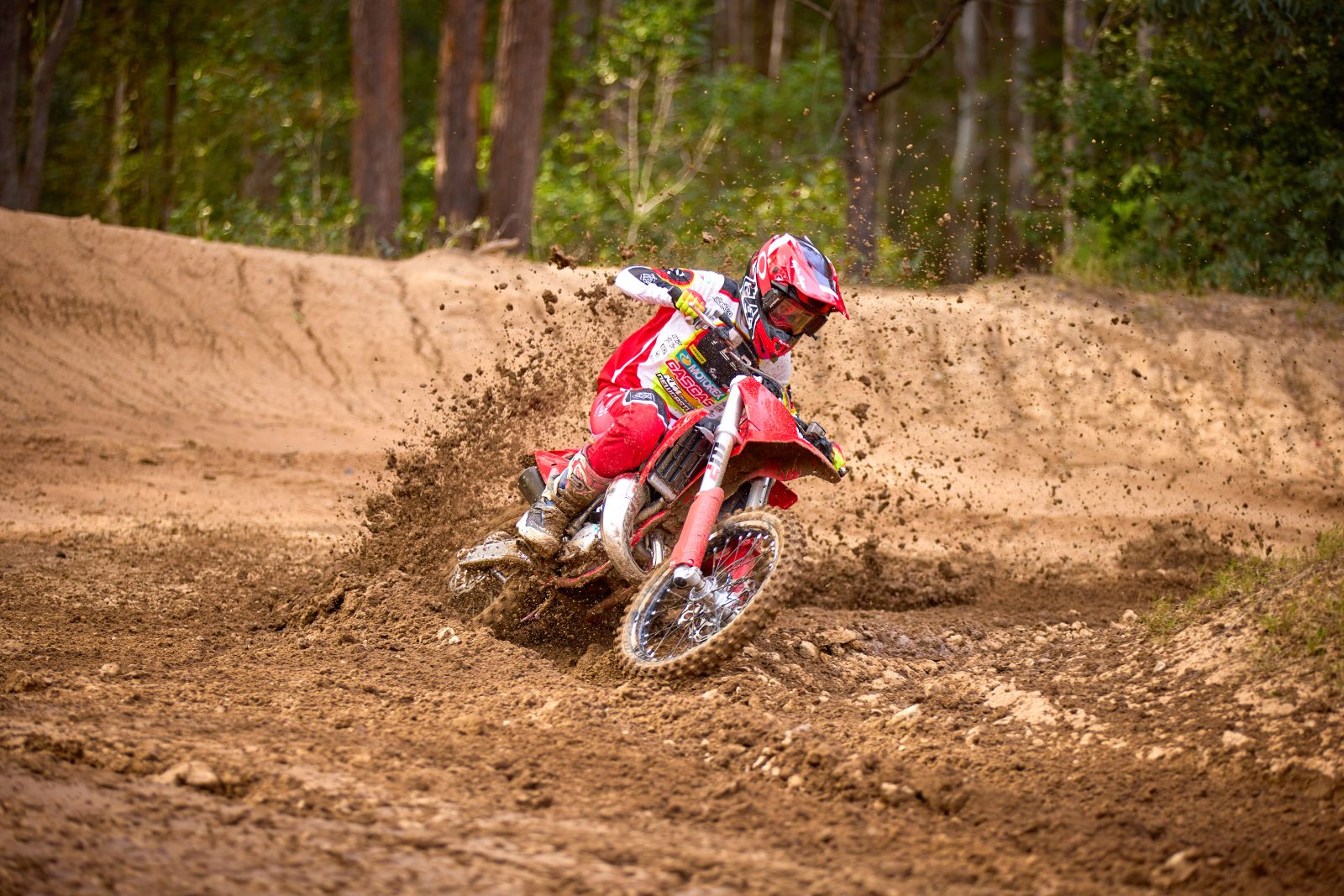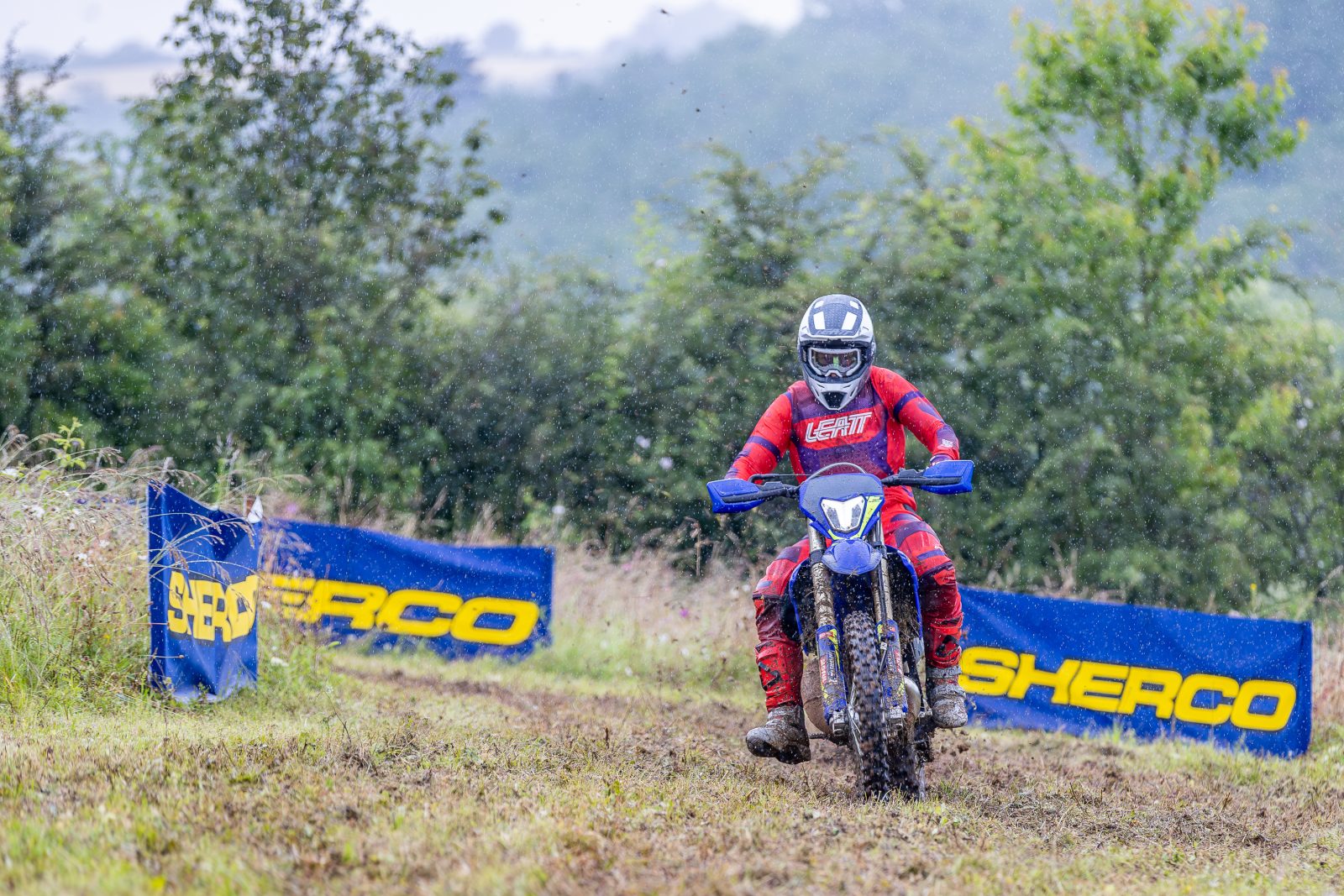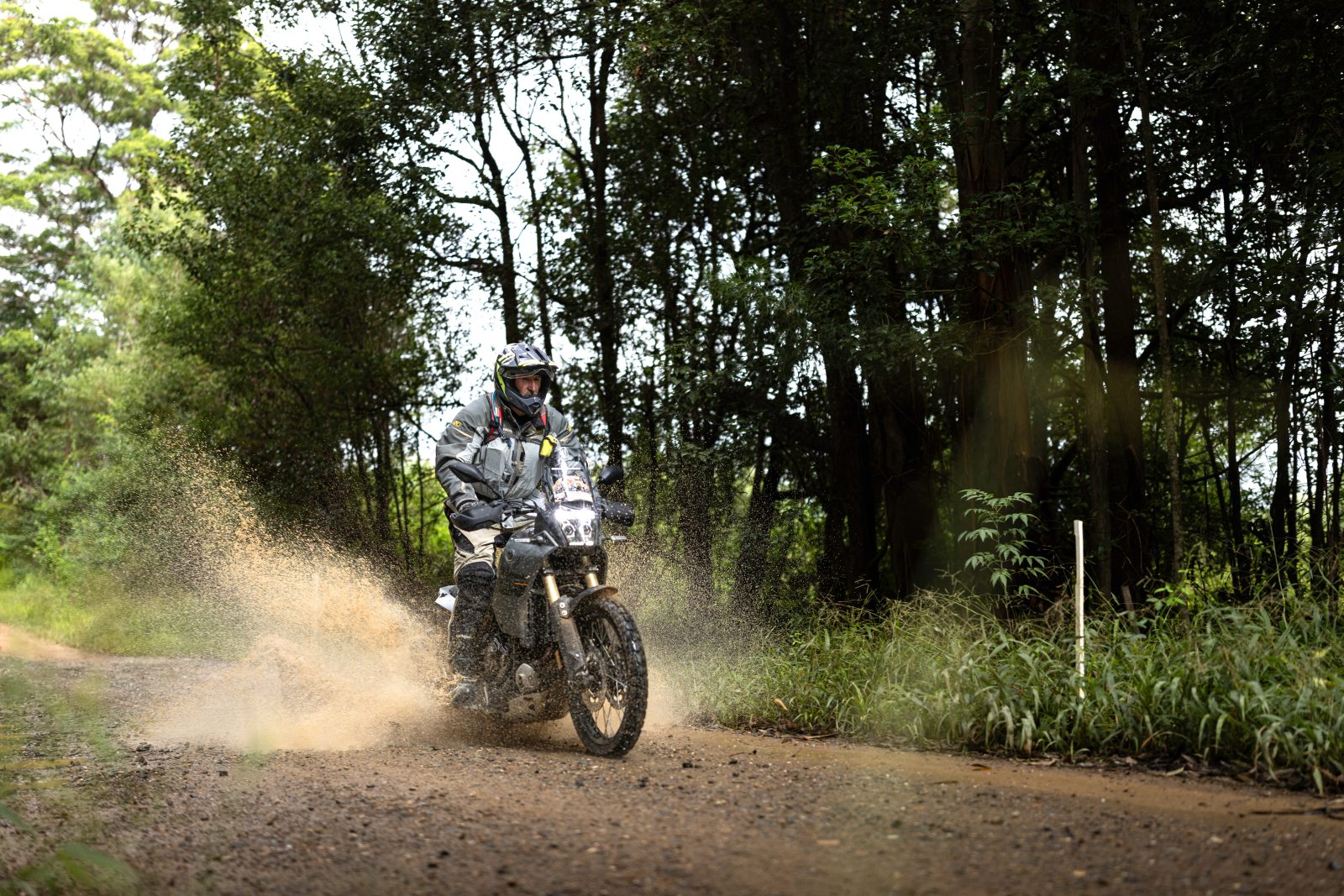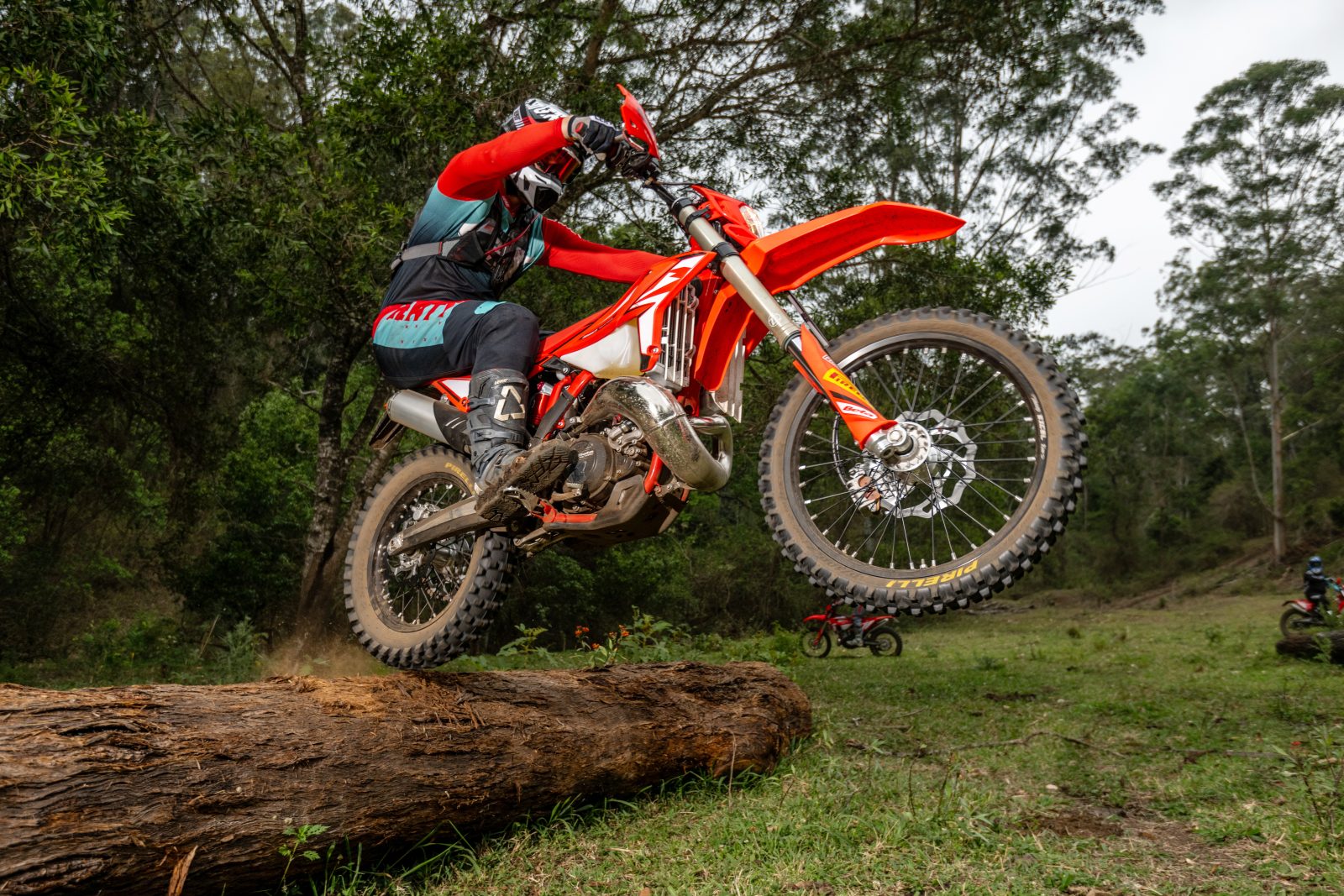This is our fourth electric bike test in five months! Two years ago I remember people telling me “It will be at least a decade before we see them (electric bikes that is) on the trails or at a track and they become part of the dirt furniture”. Well guess what, in 2022 that electric bike is the new coffee table!
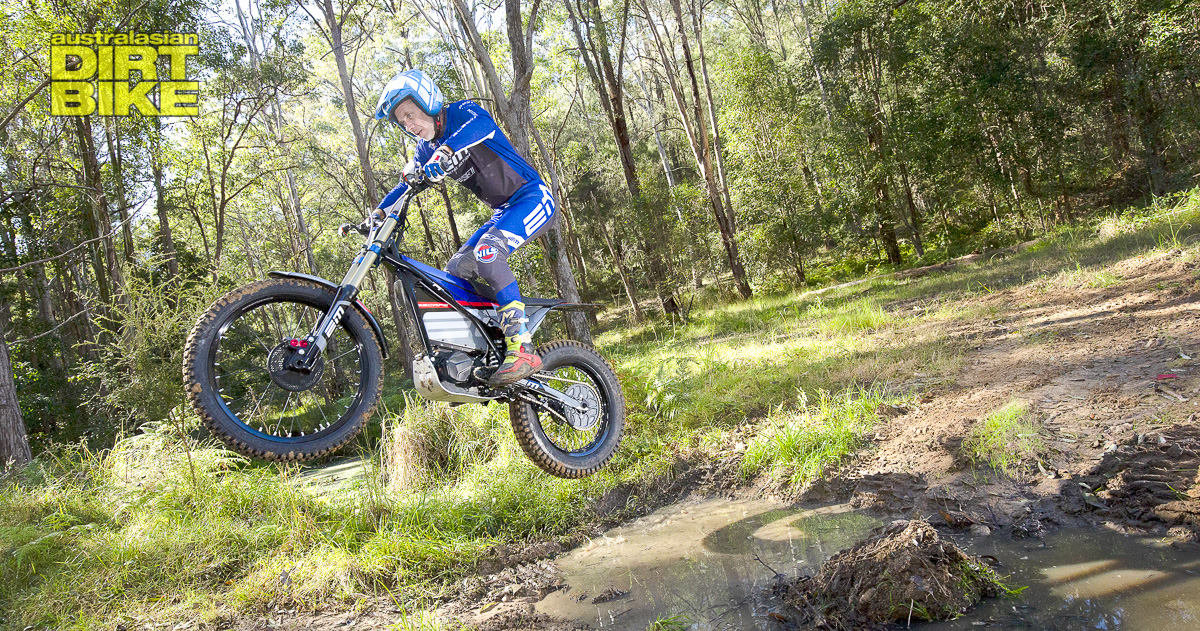
The electric future isn’t coming, it has arrived. We love progress here at ADB and we welcome what the electric age will bring to our sport. The Electric Motion (EM) Escape R is nothing new. It was actually being ridden in forests in Europe well before some of you probably started worrying about the death of dirtbikes because of a switch from petrol to electric.
EM is a French company that was established in 2010. They first competed in trials with an electric bike in 2012. By 2014, EM had secured top-step in the French Trials Championship. Then in 2016 they released the Escape R (this bike we are testing here) with a more conventional look to it. It had a seat and slightly different electric motor and battery. It enabled riders to commute and also joy ride on it on the weekends (depending on where you lived in Europe).
The Escape R isn’t a hardcore enduro bike, it is more of a trail bike and wouldn’t look out of place sitting next to the KTM Freeride, Beta X-Trainer and Rieju Ranger. It is a little smaller than those models mentioned and little softer but that is the closest comparison to the petrol world.

Chin scratcher
As soon as you hop on the Escape R it feels like a hybrid trials/trail bike. It’s thin, short and a little cramped. The fork is a Tech branded unit with only 175mm of travel and it’s super soft so charging into braking bumps isn’t really its cup of tea. The shock is an R 16 V with 170mm of travel, so not much better for big braking bumps. If you haven’t heard of those brands, don’t stress, not many people outside the trials world would have. It’s standard trials suspension which isn’t designed for hard trail work.
It runs a thin seat that goes all the way up to the steering stem but it’s only 820mm high so only 15mm taller than a Yamaha 125L and almost a full 100mm under the KTM Freeride E-XC which sits at 910mm. So it’s short which is good for beginners or those vertically challenged. The handlebar felt normal, the small handguards worked at protecting my digits from branches and the odd tip over.
The bike only weighs 83kg so it feels as light as it is which is great for late braking and changing direction on single track.
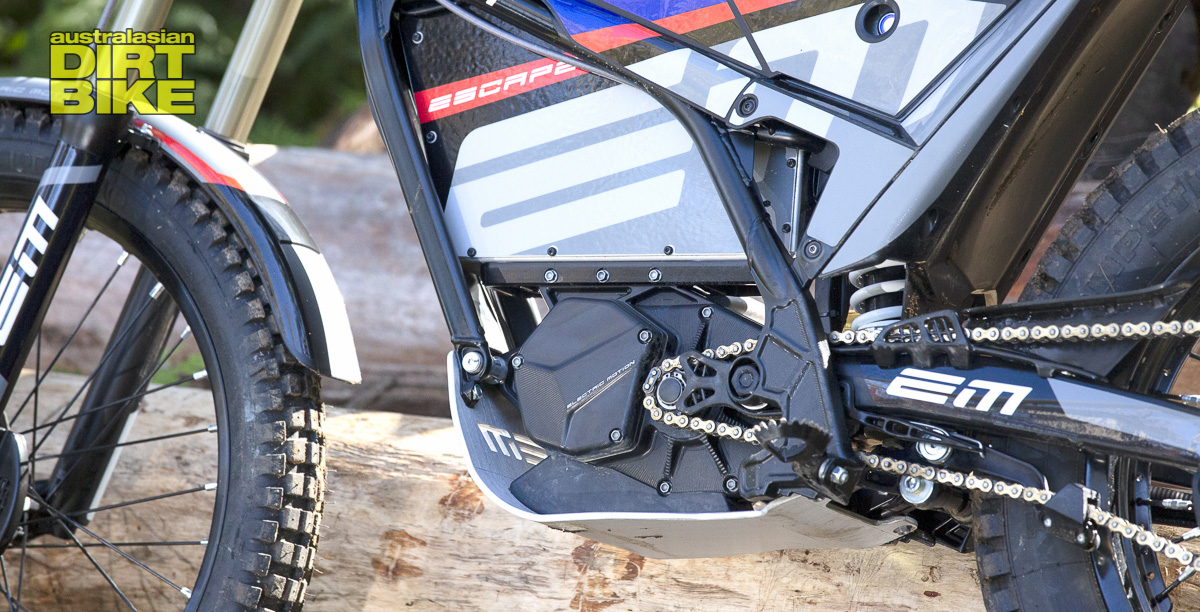
Same but different
Most of you want to know, what’s the motor like to ride? It’s not that dissimilar to a regular petrol-powered bike. The power is probably comparable to a GASGAS EC 250F and despite what many think, it isn’t aggressive or on/off. It felt pretty smooth and linear and when trailriding through single track you could crawl it around tight hairpins without it feeling jerky off the bottom and I didn’t have to use the clutch to do this (yep, I’ll get to the clutch soon).
You could even crawl this electric motor. While the Sur-Ron Storm Bee could also be crawled and the Stark Varg walked, the EM Escape R could go even slower. We assume this is because the motor was built for trials but you could actually do about half the slowest speed you would on a EC 250F but with no clutch at all. Because you don’t have to think about gears or stalling the bike you don’t have to think hard what you’re doing when going slowly. Electric bikes actually make things less complicated.
We did have a chance to race it against a modified GASGAS EC 350F and it got cleaned up. Even off the start the EC3 350F launched out of the gates harder and when we tried a rolling start it got even worse for the Escape R. This bike isn’t designed to out-drag your mates petrol bikes, you’ll probably need a Stark Varg for that. The engine isn’t massive, producing 6kw at normal power and 11kw at peak power but it does produce 600nm of torque. The max speed claimed by EM is 75km/h and we can confirm, you won’t go a single peg over that.
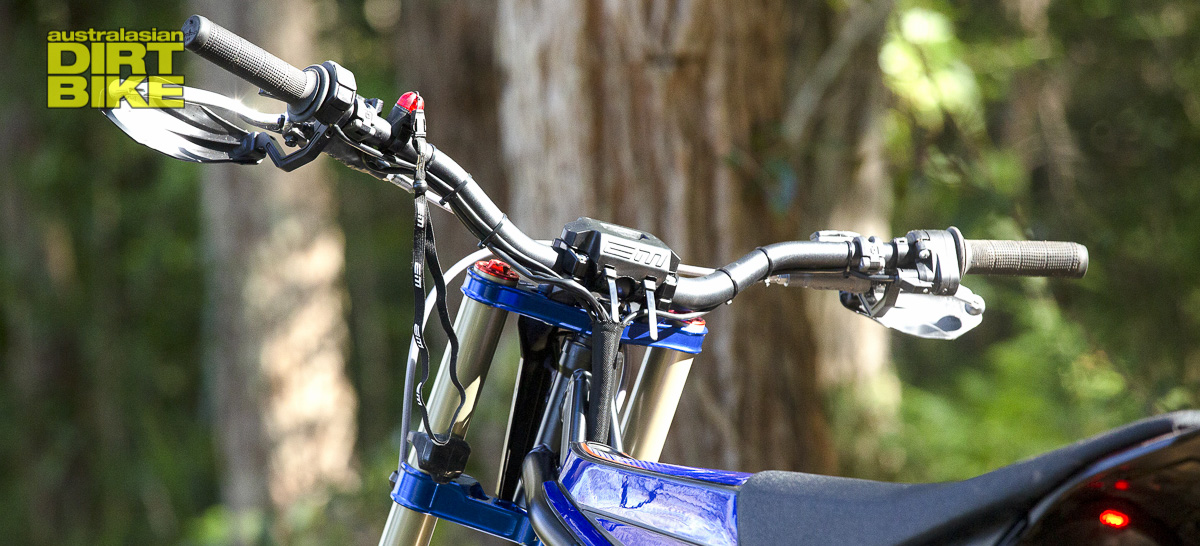
Nuts and bolts
How does the clutch work on Escape R?
The Electric Motion E-Pure Race and Escape R share the same diaphragm style mechanical clutch. There is no need for a gearbox with an electric motor drive-train as they can produce max torque from zero revs and just keep accelerating to their designed maximum RPM.
The design of the EM clutch is very simple, the primary drive shaft from the Ashwoods motor has a heavy fly-wheel added, mated to the output shaft and clutch. The clutch basket runs in a normal oil bath and is hydraulically operated from the handlebar. The pressure plate is also adjustable for pre-load to adjust the feeling/engagement of the clutch.
The EM mechanical clutch allows the rider to build up the revs with the clutch in, when you let it out, the fly-wheel effect really kicks in and lots of torque goes to the back wheel for exciting acceleration.
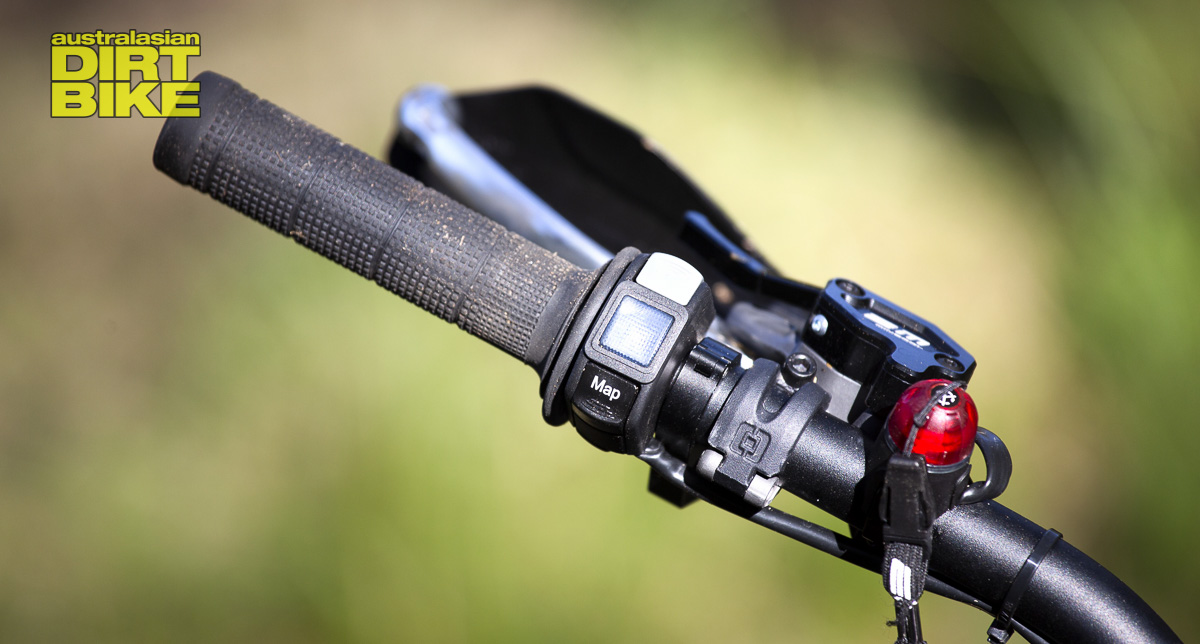
How long does the battery last and how long does it take to swap?
The battery pack in Escape is 2.6 Kw/hours capacity. The Escape has a range of 40km to 60km, based on riding style and rider mass. If the rider uses the regenerative braking often, the range is better. The Escape R battery is longer and narrower than the E-Pure’s, it is not designed to be ‘hot-swappable’ like the Trials bike. The Escape battery can be removed in a workshop.
Generally, the owners always charge the battery packs whilst they are mounted in the machine.
The EM 1.9 and 2.6Kw/h battery packs are rated to last 1000 cycles and still be above 80% of their original capacity. 1 cycle = 1 x complete discharge/ re-charge of the pack. If you discharge to 50% and recharge, this is counted as half of 1 cycle. If you ride approximately once a week, that is well over ten years.
The key to good battery health is to look after your pack and never let it sit around at low charge for prolonged periods of time.
How does an electric motor work?
Most electric vehicles use an AC Induction type motor, first patented by Mr Nikolai Tesla at the start of the 20th century. Put simply, there are ‘windings’ of copper wire that spin on a shaft at the correct angle to the fixed magnets of the motor. When the copper wire is given voltage, the electro-magnetic effect spins the shaft of the motor connected to the drive-train.
The modern electric drive-train has three key elements, the motor, the controller unit and the battery pack. The controller and motor work together to achieve the correct output at the back wheel, relative to what you are doing with the throttle input. The battery must supply the volts and amps at a quick enough rate to run the motor.
The controller on an electric bike does the job of the carburettor and exhaust on a petrol bike.
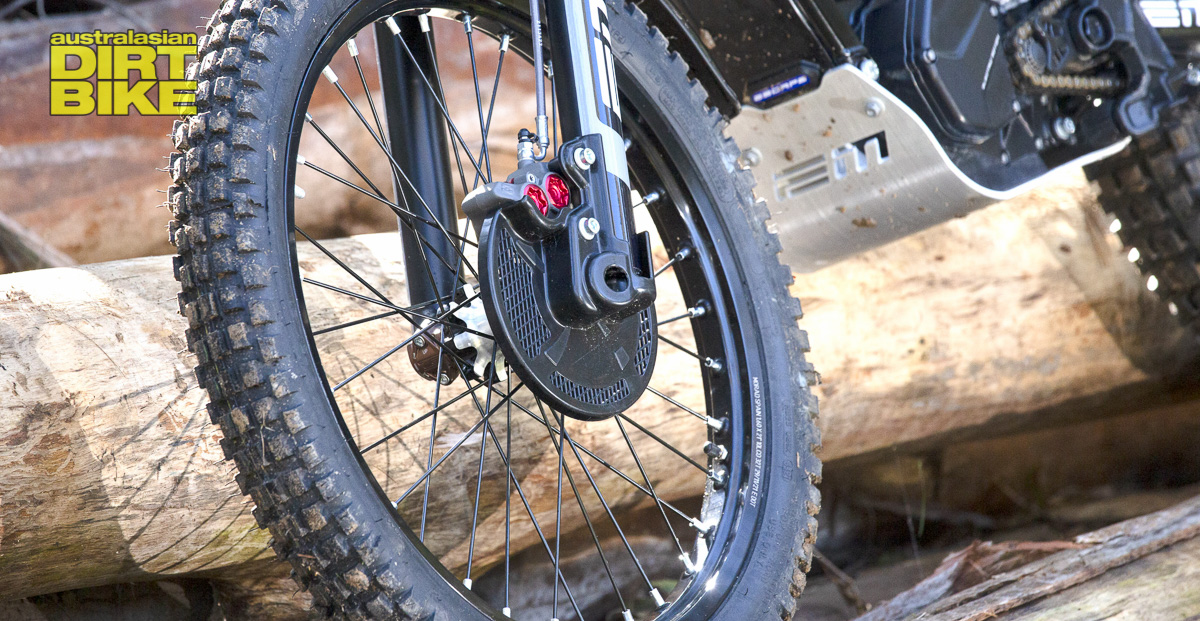
How does the Escape R rev up?
The new feature for the Escape R drive-train is the TKO or ‘tick-over’ function. You must hold in the clutch or keep on the back brake to make the ‘idle’ or ‘tick-over’ stop. The TKO can be switched on or off via the bikes map switch.
When balancing stationary with TKO on, the rider can feel the gyroscopic effect of the fly wheel assisting with balance. It is also useful for riding slippery creeks for example where you need delicate throttle control when going on and off the ‘idle’ part of the throttle.
The TKO gives the EM clutch drive-train a familiar feeling to conventional ICE bike drive-train.
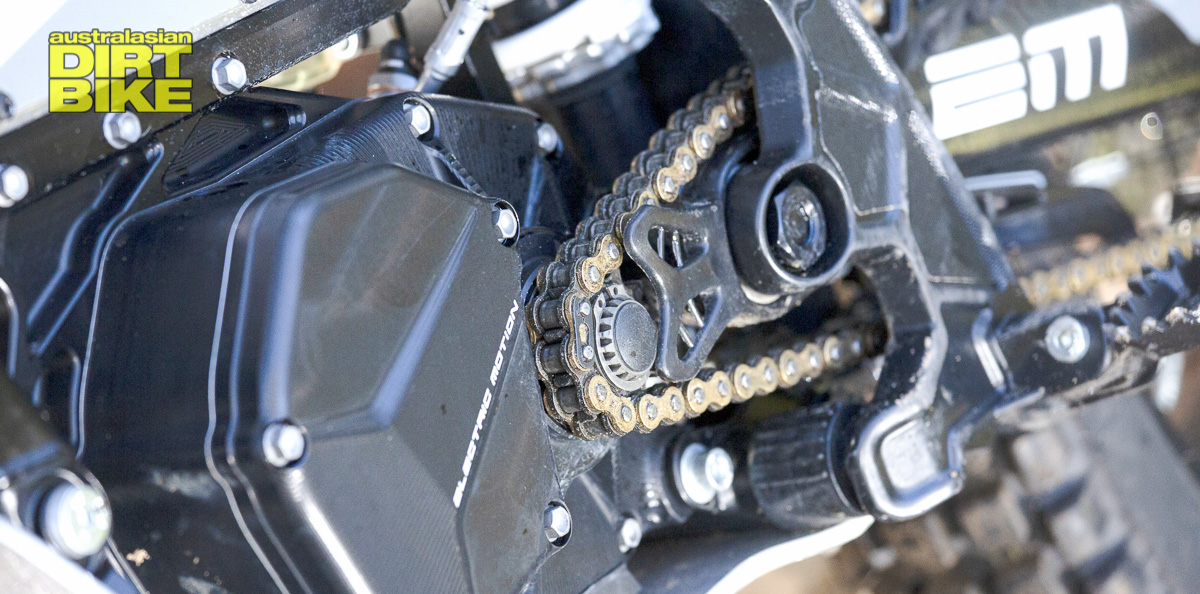
Can the battery explode or catch fire?
The EM battery packs have a highly evolved Battery Management System or BMS. The BMS has a primary function of keeping the packs 14 x ‘cells’ at optimum and safe voltage. When the pack is receiving a charge from the standard EM wall-socket type charger, the charger and battery pack automatically shut down when the cells have reached maximum voltage. During discharge (riding) the pack will shut down when the cells reach the low point of ‘safe-voltage’. The BMS has many protocols and functions designed to protect the battery pack in all conditions.
Thanks to the frame placement of the battery packs, which are now CNC machined aluminium cases, there have been only minor damage to EM packs from crashes. If a very sharp object punctures the pack in the wrong way, the potential for fire does exist, this is the nature of lithium-ion batteries.
Can it be serviced?
The EM motors and drive trains have very few moving parts compared to ICE bikes. The motors are air-cooled, require no maintenance and have proven to be reliable and resistant to crash-type damage. The motor is approximately AUD $2000, the special engine encoder/sensor, mounted on the centre of the outside of the motor, is a $450 part from EM Australia, in the rare instance of it being smashed.
The maintaining of the drive train is limited to oil replacement for the mechanical clutch. The ‘standard’ belt drive transmission models Escape and E-Pure have a ‘Gates’ type belt that requires no maintenance with a long life prior to needing replacement. The Gates belt does the job of connecting the pulley from the motor to the larger drive pulley of the output shaft, thus achieving the ‘reduction-gear’ so that there is no need for a very large rear sprocket as seen on some other less developed electric bike designs.
Will the Escape R get a form of Registration?
The Escape R is not currently available as a road registered bike in Australia. They can be recreationally registered in Victoria and Tasmania. EM Australia are working with the EM factory in France on registering the Escape bikes for Australia in 2023.

Second Opinion
- Name: Jeff Briggs
- Bike: GASGAS EC 350F
- Age: Late 30s
- Size: 95kg, 180cm
Being a hybrid trials trail bike I wasn’t sure what to expect but as soon as I hopped on I was away with a smile on my face. The power was great for the type of riding you’d want to do on this bike and while it’s a fair bit slower than my EC 350F, I never felt like I needed more either as it’s around 30kg lighter. The suspension is good for trails and trials but probably not quite up to the task of some decent jumps but in the bush it’s enough to get the job done.
The most impressive thing for me was the bike’s ability to take on any terrain, be it rocks, logs, ruts etc and the fun factor of being able to communicate with your mates whilst out in the trails. The battery performed above expectation and if you’re looking to hone in your trials and hard enduro skills, this bike would be a great help.

Why go electric?
If you still need convincing to at least try electric, here are the reasons EM believe it’s worth dipping a toe:
- EM’s are a smooth ride with motors that provide impressive torque.
- With no over-heating parts, there is no risk of burning your body parts. And with no fuel to leak out, no gearbox, carburettor, air filter, exhaust pipe or cylinder to maintain the chances of something going wrong decreases substantially. This also means fewer maintenance costs.
- Simple controls with improved speed controls.
- Easy to charge – any standard power point will do.
- It takes less ‘human’ rider energy, perhaps due to less vibration, not having to constantly operate the clutch, gearbox or kick-starting.
- An EM opens the opportunity to ride in more places, more often.
Learn more at EM’s australian website here
